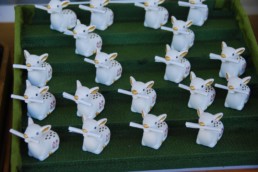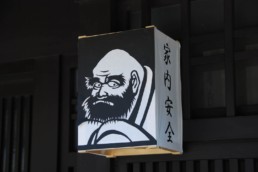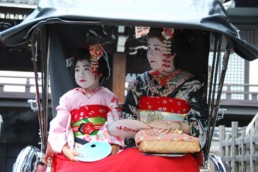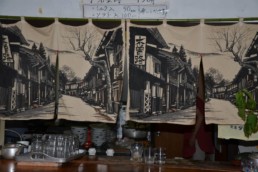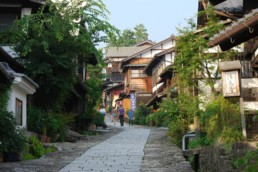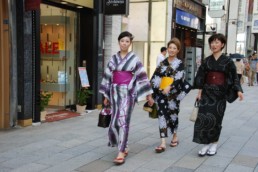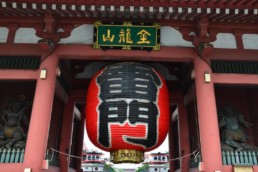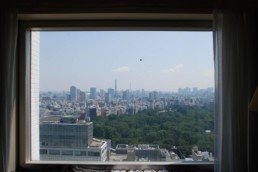This morning we will skip on the traditional Japanese breakfast at the minshuku. We have a hard time with the miso soup and rice bowl in the early morning….The omelets are good, yes, but flavored with seaweeds….So last night we made sure to purchase a stock of bananas, some bread, and several bottles of water. We wake up early and eat our breakfast of bread and bananas at the bus stop in Magome. Our train in Nakatsugawa will leave at 9:00 am towards Nagoya where we will take the Shinkansen heading for Kyoto.
We arrive slightly before 12:00 noon at Kyoto. It is a huge train station with many exits. Which way should we go, the main exit, the south exit, the west exit ….? We finally manage to find the right exit, and out of the train station, we drag our elephant-size suitcases about a mile to the Aranvert hotel where we will stay 4 nights. The walk feels a little bit longer than expected. The heat is still punishing and we try to stay in the shades of the buildings.
At the hotel, check-in is not before 2:00 pm. We leave our luggage and head back towards the Kyoto station, looking for the sandwich joint we noticed on the way up. So sorry, we must admit that, half way through our trip in Japan, we feel a bit saturated with Japanese food, although we like it very much. At this very moment, we do not crave for miso soup. A good old ham-and-cheese sandwich will do nicely for lunch today.
Kyoto was the capital of Japan for nearly 1100 years, from 455 to 1560. It is considered the historical, intellectual, and cultural center of Japan. The city spreads over a large area surrounded by hills, but with about 2.6 million inhabitants, the atmosphere is pleasant and you do not feel the density and overcrowding of Tokyo. Kyoto hosts hundreds of temples and shrines.
We have decided to start our sightseeing with a visit of the Fushimi-Inari shrine. To get there from the city center, we take the Kyoto metro and then a JR train. It is a quick ride. We have become quite experienced with the public transportation in Japan!
Fushimi-Inari is the most important Shinto shrine of the Inari branch (there are about 40,000 in Japan). It is composed of a huge network of galleries formed by an endless alignment of bright red tori’s (gates) on which prayers are written.
The tori marks the frontier between the sacred world and the mundane. The word Inari means literally ‘growth of rice’. The Inari cult was introduced by a family of Korean immigrants back in 711. In this sanctuary, there are hundreds of fox statues, as the fox is believed to protect crops.
The walk under the tori’s covers several kilometers, and is very pleasant. Every now and then, you encounter couples dressed in traditional costumes, which adds to the magic of the place. The sunlight of this late afternoon is perfect, the scenery is simply beautiful.
Back at our hotel, we eat a western diner in a cozy corner of the restaurant: spaghettis with tomato sauce! It is a quiet time to read, write the journal of the day, sort the tickets from the visits, review the photos taken that day. A bit tired, of course, but happy and satisfied by a full day of great sightseeing.









